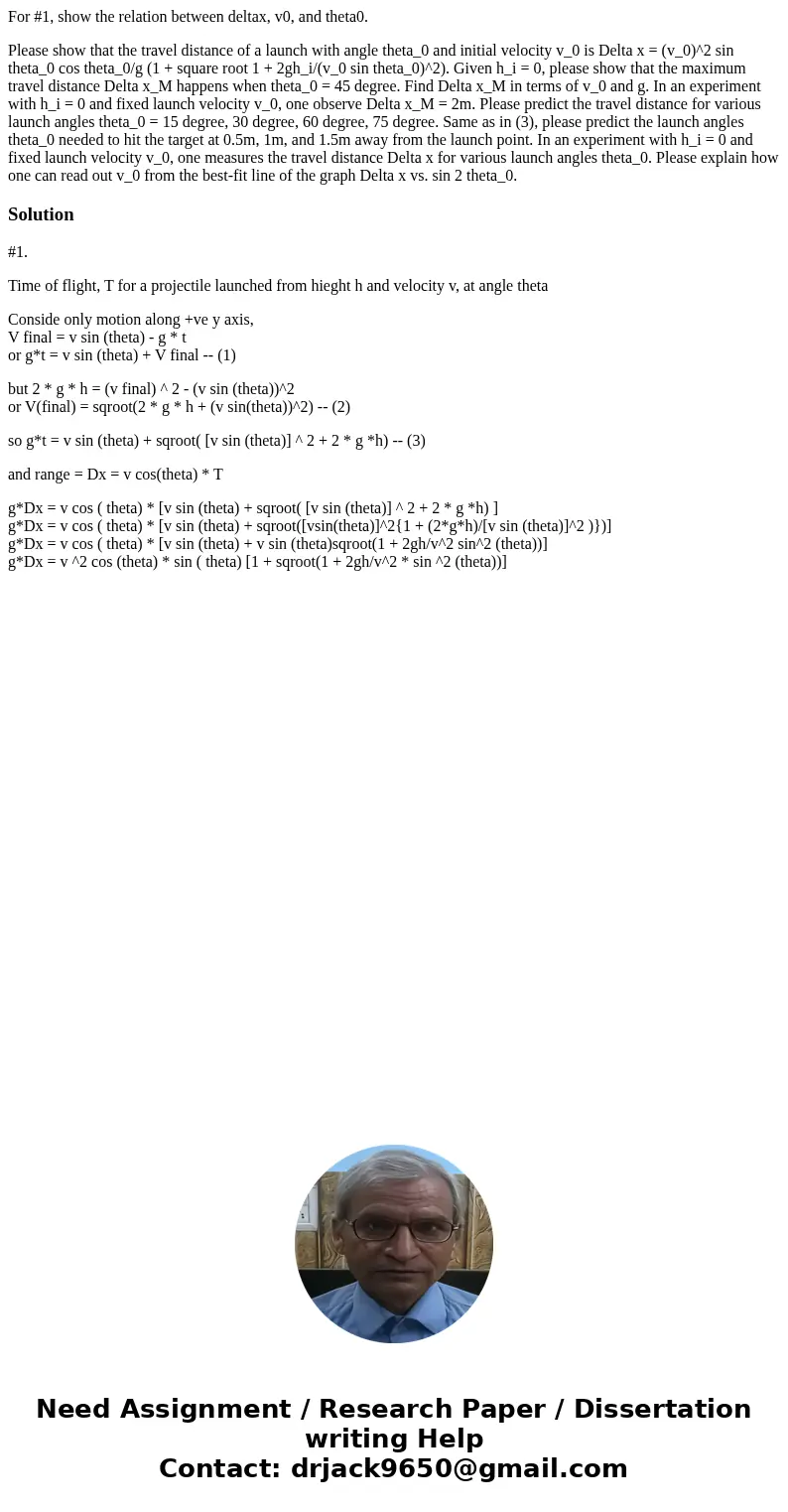For 1 show the relation between deltax v0 and theta0 Please
For #1, show the relation between deltax, v0, and theta0.
Please show that the travel distance of a launch with angle theta_0 and initial velocity v_0 is Delta x = (v_0)^2 sin theta_0 cos theta_0/g (1 + square root 1 + 2gh_i/(v_0 sin theta_0)^2). Given h_i = 0, please show that the maximum travel distance Delta x_M happens when theta_0 = 45 degree. Find Delta x_M in terms of v_0 and g. In an experiment with h_i = 0 and fixed launch velocity v_0, one observe Delta x_M = 2m. Please predict the travel distance for various launch angles theta_0 = 15 degree, 30 degree, 60 degree, 75 degree. Same as in (3), please predict the launch angles theta_0 needed to hit the target at 0.5m, 1m, and 1.5m away from the launch point. In an experiment with h_i = 0 and fixed launch velocity v_0, one measures the travel distance Delta x for various launch angles theta_0. Please explain how one can read out v_0 from the best-fit line of the graph Delta x vs. sin 2 theta_0.Solution
#1.
Time of flight, T for a projectile launched from hieght h and velocity v, at angle theta
Conside only motion along +ve y axis,
V final = v sin (theta) - g * t
or g*t = v sin (theta) + V final -- (1)
but 2 * g * h = (v final) ^ 2 - (v sin (theta))^2
or V(final) = sqroot(2 * g * h + (v sin(theta))^2) -- (2)
so g*t = v sin (theta) + sqroot( [v sin (theta)] ^ 2 + 2 * g *h) -- (3)
and range = Dx = v cos(theta) * T
g*Dx = v cos ( theta) * [v sin (theta) + sqroot( [v sin (theta)] ^ 2 + 2 * g *h) ]
g*Dx = v cos ( theta) * [v sin (theta) + sqroot([vsin(theta)]^2{1 + (2*g*h)/[v sin (theta)]^2 )})]
g*Dx = v cos ( theta) * [v sin (theta) + v sin (theta)sqroot(1 + 2gh/v^2 sin^2 (theta))]
g*Dx = v ^2 cos (theta) * sin ( theta) [1 + sqroot(1 + 2gh/v^2 * sin ^2 (theta))]

 Homework Sourse
Homework Sourse